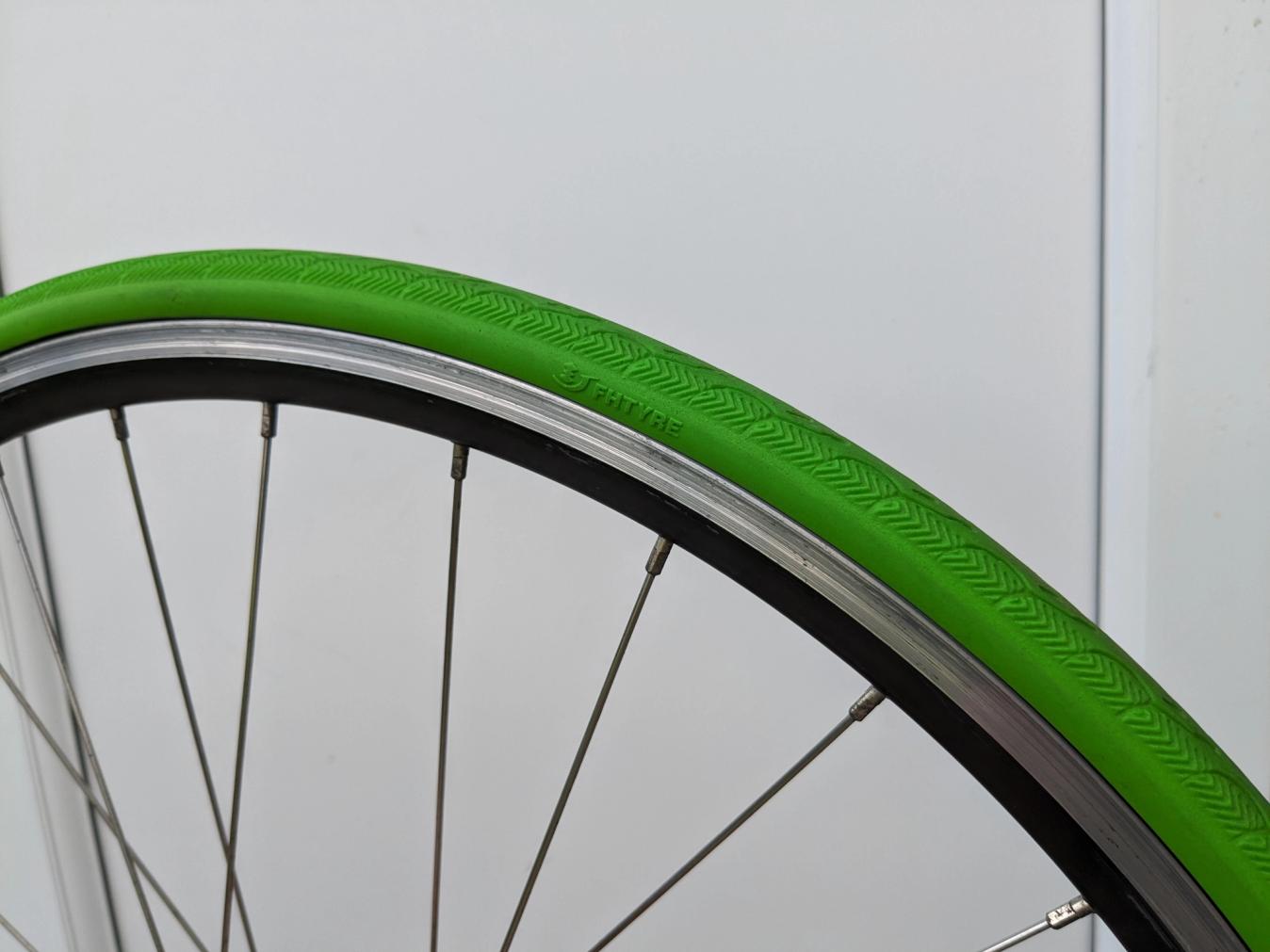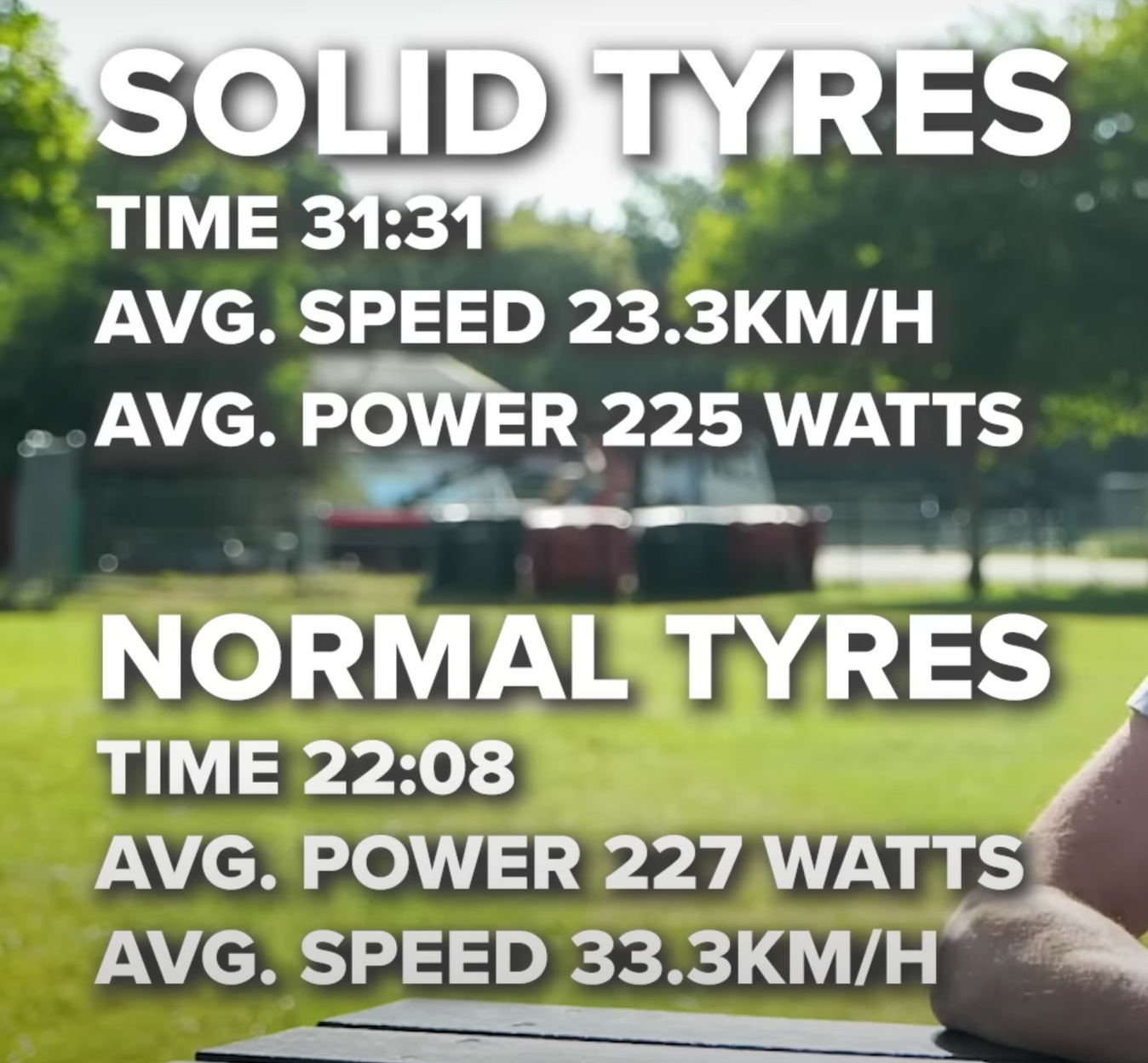Are puncture-proof tyres any good?
Our guide to the pros and cons of puncture-proof tyres
Tom Hallam-Gravells
Online Production Editor
Punctures: everyone hates them. It’s one of the few things that the whole cycling world can agree on. With that in mind, it's surprising that the cycling industry has failed to find a method of completely eradicating them, or have they?
Puncture-proof tyres have been around for a while now. In fact, solid tyres were invented long before pneumatic, puncturable ones. Even today, solid, puncture-proof tyres exist, and they are common on city bikes and hire bikes.
But besides heavy city bikes, should the rest of us consider using puncture-proof tyres?
Here’s a complete guide to the pros and cons of puncture-proof tyres. We’ve even put a pair to the test, so we can tell you first hand just what they're like on the road.
Read more: Butyl vs latex vs TPU: what are the best inner tubes for cycling?
What are puncture-proof tyres?

GCN
Puncture-proof tyres, as the name suggests, can't puncture.
Ever since the pneumatic tyre was invented, cyclists have grappled with the problem of punctures. It’s led the industry down many paths throughout the years, but modern cyclists who want added puncture resistance usually opt for one of two options: tubeless setups or clincher tyres with puncture-resistant compounds.
Tyres with high puncture resistance use a tougher, thicker compound, but that often comes at the concession of added weight and more rolling resistance; they’re not built for performance.
Subsequently, tubeless tyres have risen to popularity in recent years. As the name suggests, they don’t require an inner tube. Instead, the tyre creates an airtight seal with the wheel rim. Sealant can then be inserted into the air pocket between the tyre and rim to boost puncture resistance. Once again, this doesn’t totally eradicate punctures; the sealant can only plug smaller holes in the tyre.
The only way to completely eradicate punctures would be to remove the air pocket between the tyre and the rim, which is where puncture-proof tyres step in. They have a thick band of rubber under the tread which fills the gap where air would usually be inserted, so they don't have to be inflated.
With no air, there’s no risk of deflation.
Read more: NASA-inspired airless bicycle tyres smash crowdfunding target
Pros of puncture-proof tyres
Puncture-proof tyres have only one benefit, although we'll grant you, it's a significant one: they eradicate the chance of getting a puncture.
For anyone who has little interest in performance and solely wants to get from A to B with no deflating hold-ups, they could be a great option.
Read more: Everything you need to know: What makes a good or bad tyre?
Cons of puncture-proof tyres
With the pros swiftly out of the way, it’s time for the cons, and it’s a considerably longer list.
Weight
We got our hands on some puncture-proof tyres for a test (results below) and they weighed 460g each (23mm). By comparison, a lightweight clincher tyre weights around 200g.
Comfort
There’s no other way to put this, puncture-proof tyres don’t improve comfort in any way. In fact, they take it away. Removing that nice cushion of air from the equation results in tyres with no give or compliance.
Grip

GCN
The firmer material leads to less grip.
On regular tyres, the tyre deforms to meet the surface of the road, with the help of the air inside of them. It means that pneumatic tyres have really good traction with the road.
That’s not possible with puncture-proof tyres, and to compound the problem, they’re usually constructed from lower-quality materials which leads to predictably poor grip.
Speed
Those same reasons which cause poor grip also affect speed. By how much? It’s time for some GCN science.
Puncture-proof tyre test
We wanted to know just how slow puncture-proof tyres are, and whether the added puncture protection makes up for this.
So, we bought a pair from Ebay for a cost-friendly £15.99 per tyre and got Alex Paton to conduct a simple speed test. For this Alex rode a short 12km route twice, once using his premium road tyres, the other with the puncture-proof tyres.
Both tests were conducted on the same bike. The performance road tyre would obviously be faster, but we wanted to know if it would still be faster with a puncture factored in, which essentially negates any advantage of the puncture-proof tyre.
Holding the same watts (OK, there was a slight two-watt difference between the two efforts), Alex completed the course nine minutes and 23 seconds faster with the premium tyre. That’s a huge time difference over such a short course.

GCN
The premium tyre was significantly faster.
In speed terms, the premium tyre was exactly 10 kph faster.
Alex could have fixed a puncture in that time and still have finished faster. This test was only conducted over a relatively short distance, and the advantage would only grow over longer rides.
Fitting the tyres
Before we bring things to a close, we couldn’t end without mentioning Alex’s woes trying to fit the tyres.
Many cyclists have been tormented by stubborn tyres and this can vary greatly on a tyre-by-tyre basis. In this instance, it was a tough job, taking Alex 3 minutes and 38 seconds.
That may not seem particularly long, but puncture-resistant tyres should theoretically be easier to fit as there’s no sealant or inner tubes to deal with. Alex rated them alongside the toughest tubeless tyres he’s ever tried to fit.
Are puncture-proof tyres worth it?
So, are puncture-proof tyres a viable option?
Maybe. Our answer may surprise you but puncture-proof tech may have its uses for urban riders and commuters who want cost-friendly and easy-to-maintain options that will get them from A to B.
The results of our test are pretty damning, but speed isn’t a big factor for this category of rider who generally ride shorter distances. Of course, even if you aren't concerned about speed, you might not like the discomfort and lack of traction of solid tyres. Considering these drawbacks, we’d still recommend sticking to standard clinchers or tubeless setups, even if you're a hardy commuter.
Beyond the world of urban riding, it’s hard to see puncture-proof tyres catching on anytime soon unless there is a lot of investment in the technology. Most of that energy is currently being put into tubeless tyres, so the performance gap to puncture-proof tyres is only likely to grow.
Latest Videos
1The Perfect Bike, Rusty Drivetrains & Narrow Bars | GCN Tech Clinic

2Is A Cyclist's Body A Healthy Body? | GCN Show Ep. 589

3More Hot Tech From America’s Biggest Bike Show

4Pogačar Dominates Liège And A Popular Winner Of Flèche | Racing News Show

5Intense Interval Blast | 15 Minute Indoor Cycling Workout


.jpg?w=600&auto=format)



